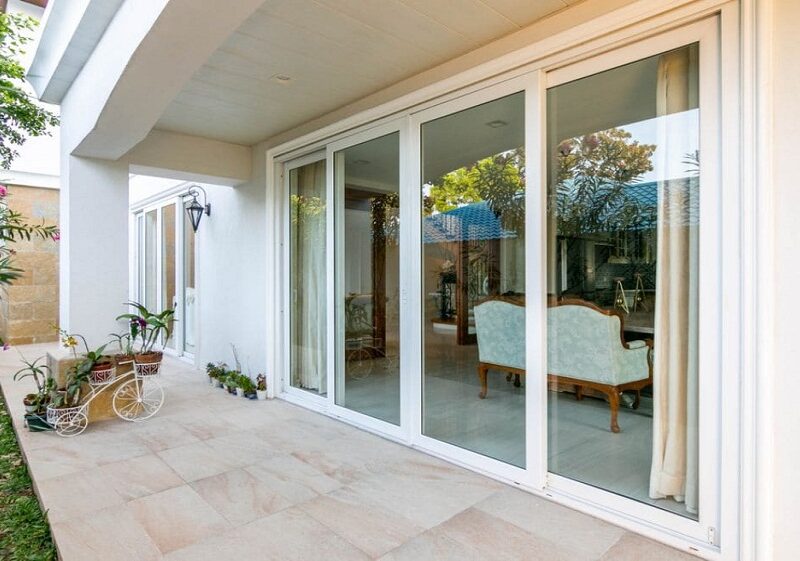Modernising a home doesn’t always require knocking down walls or remodelling entire rooms. Sometimes, the most transformative changes come from rethinking how spaces connect—and how light moves through them. For UK homeowners in 2025, sliding doors have become one of the most effective, elegant ways to achieve this transformation.
A growing desire to bring the outside in is at the heart of this trend. Whether you live in a semi-detached home with a modest garden or a larger property with sweeping views, the ability to create a seamless connection between your indoor and outdoor spaces is a design goal shared by many. Sliding doors allow that connection to happen effortlessly. With ultra-slim frames and vast expanses of glass, they dissolve the barrier between living spaces and nature. On warmer days, they open wide to let the breeze and birdsong flow. Even in winter, they frame the outdoors like a moving painting—turning your garden into an extension of the interior.
Homeowners are increasingly moving away from hinged doors or clunky French door setups, opting instead for the minimalist refinement that sliding systems offer. And unlike traditional patio doors of the past, today’s sliding doors are engineered for performance. Aluminium frames provide exceptional strength, allowing larger panes and more glass without compromising security or insulation. It’s a shift that’s as practical as it is aesthetic. With better manufacturing and glazing technology, even the largest sliding doors can now deliver impressive U-values, making them suitable for homes trying to improve energy efficiency.
As featured in Direct Trade Windows’ guide to sliding door designs, the key to modernising lies not just in the door itself but in how it transforms the flow of your home. Sliding doors encourage open-plan layouts and brighter, airier living spaces. They remove the heavy visual lines of traditional doors and allow spaces to breathe. They’re particularly popular in kitchen-diner extensions where families want to cook, eat, relax, and entertain—all while enjoying uninterrupted views of their garden.
But it’s not just about visual appeal. For homeowners who want to modernise without a complete renovation, sliding doors offer a relatively low-disruption way to dramatically update the feel of a space. Installing a well-designed set of sliding doors instantly raises a home’s design language. Rooms feel more contemporary, walls become lighter, and flooring transitions more smoothly from inside to out. It’s a surprisingly powerful design tool, especially when combined with a minimalist décor scheme or natural materials like wood and stone.
Accessibility has also become a significant consideration in indoor design, and sliding doors tick the box here, too. Their smooth, gliding mechanism makes them easy to operate regardless of strength or mobility, and their low thresholds are ideal for anyone using wheelchairs, prams, or walking aids. That combination of form and function is one of the reasons so many homeowners are incorporating sliding doors in back extensions, ground-floor bedroom conversions, and side-return projects.
Another reason for their popularity in 2025 is their ability to play nicely with Britain’s changeable weather. Modern sliding doors hold their own against wind, rain and draughts thanks to improved sealing technology and water-resistant tracks. They help keep homes warm and dry while offering a crucial visual connection to the outdoors. For families spending more time at home—whether working, raising children, or simply entertaining friends—this balance between comfort and openness has never been more valued.
For homeowners with design ambitions beyond the standard three-panel door, options abound. Many opt for designer configurations that run the full width of the rear wall or span corner returns. Others choose tinted or patterned glazing for added privacy or match their sliding doors with similarly styled windows for a cohesive, architectural finish. Aluminium’s flexibility as a framing material makes it ideal for these custom projects, with powder-coated finishes available in everything from understated neutrals to bold heritage tones.
Another subtle advantage of sliding doors is how they improve a home’s value and marketability. Buyers are increasingly drawn to homes with flexible layouts, open-plan flow, and natural light—all of which sliding doors help deliver. In the current housing market, where kerb appeal and lifestyle upgrades can influence asking prices, installing elegant, efficient sliding doors can be a savvy investment.
It’s unsurprising that interior designers and architects routinely specify sliding doors in their plans for modern builds and heritage renovations. Whether giving a 1930s semi a contemporary edge or finishing off a glass-box extension on a new build, sliding doors add that crisp, architectural note that defines the moment’s look. With more UK homeowners choosing to improve rather than move, projects that add long-term value without disrupting home bones are especially popular.
Crucially, the best sliding doors are not off-the-shelf solutions—they’re tailored to the home, the layout, and the lifestyle of the people living there. That’s why more people are turning to companies like Direct Trade Windows, which offers a consultative product design approach. Their team works closely with clients to recommend configurations, finishes and features that align with modern living standards, helping homeowners achieve both visual impact and lasting performance.
Sliding doors aren’t just another product on a spec sheet. They’re a shift in how we experience home life, bringing in more light, air, and opportunities to connect with the outside world. For anyone looking to modernise in 2025, they represent one of the most effective, elegant, and rewarding changes you can make.











